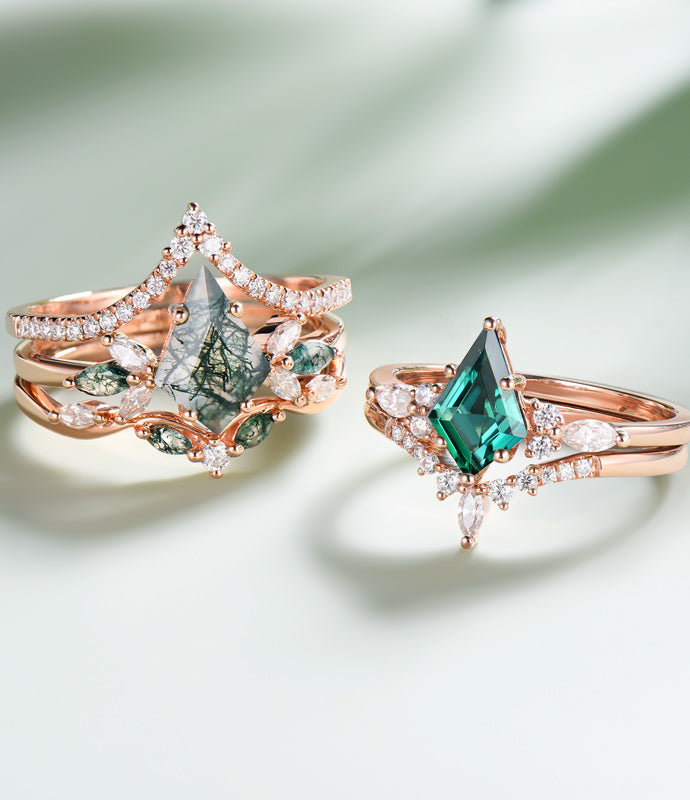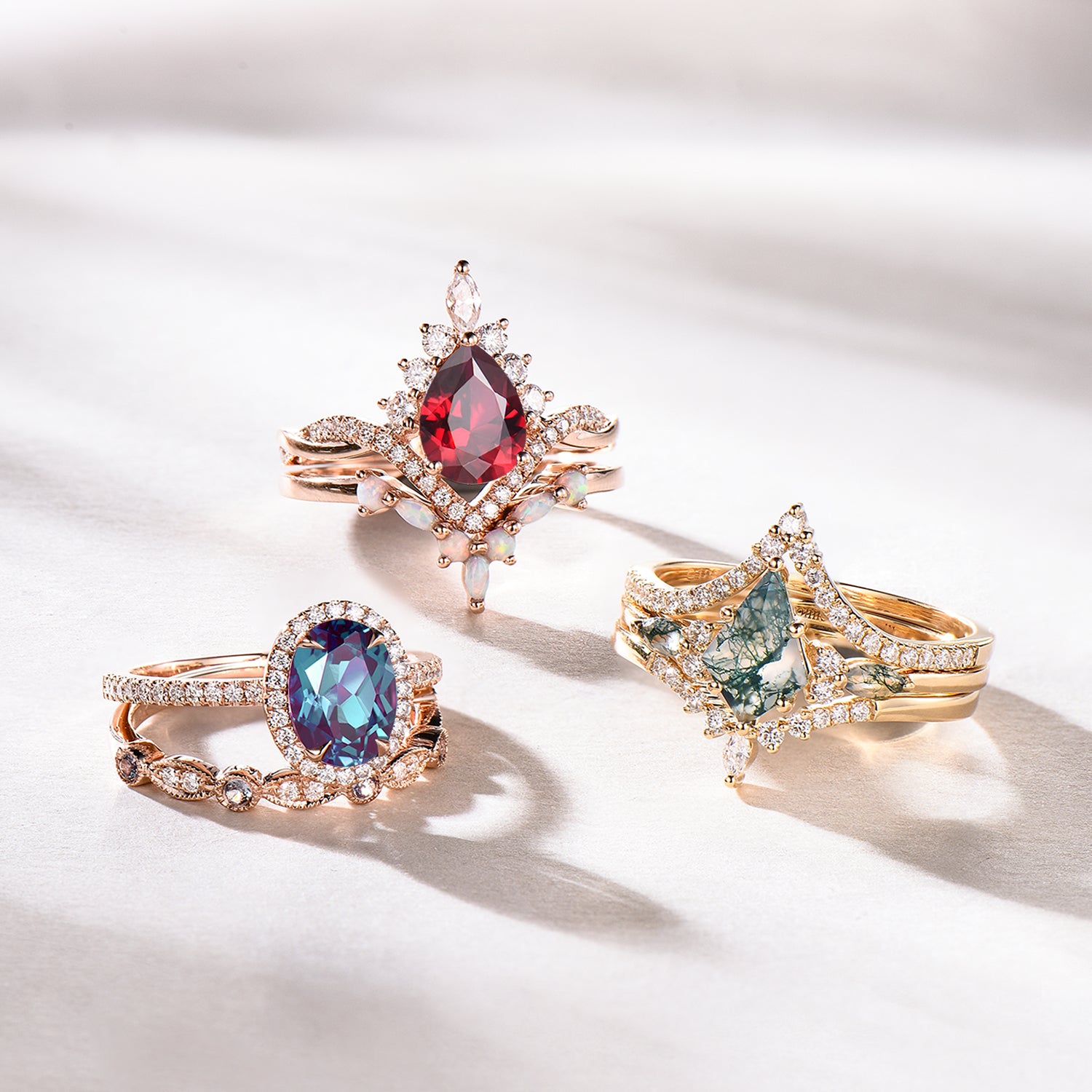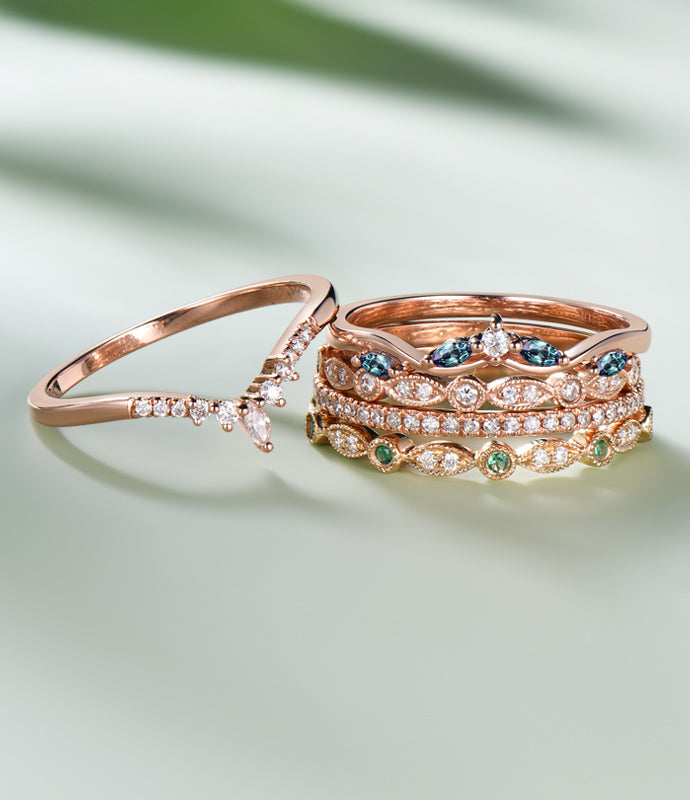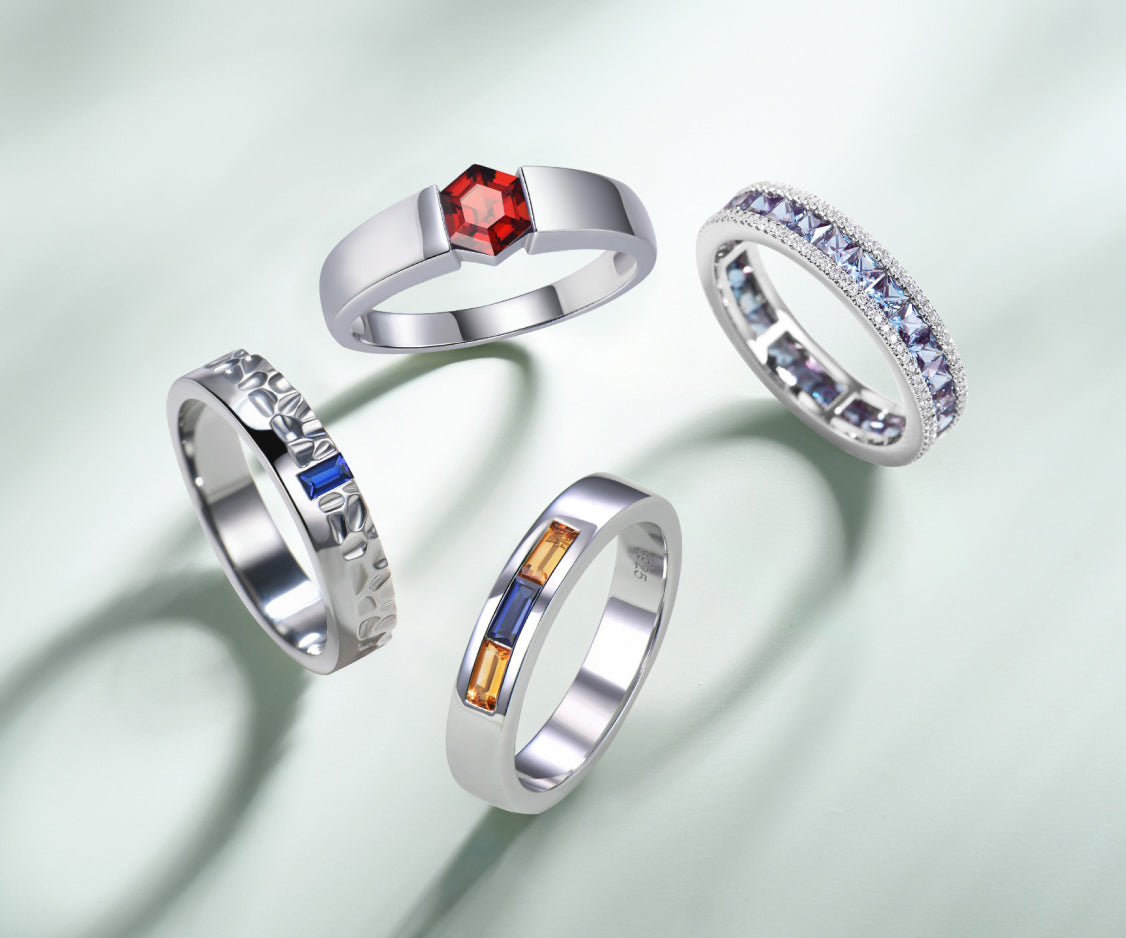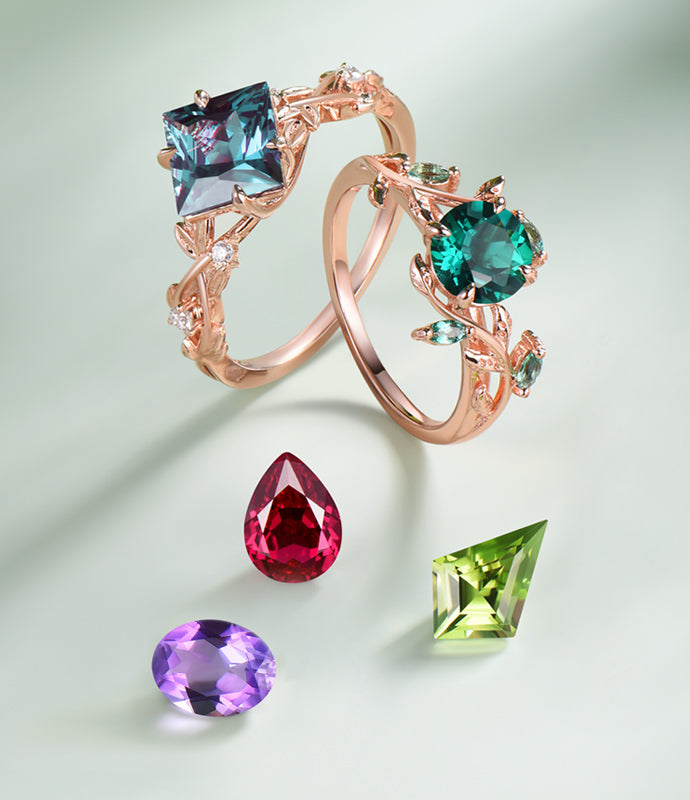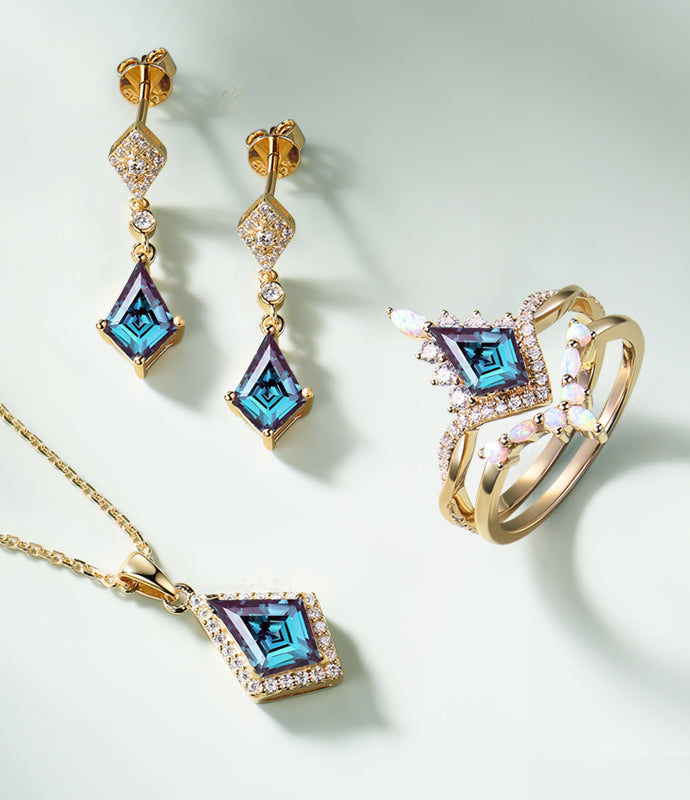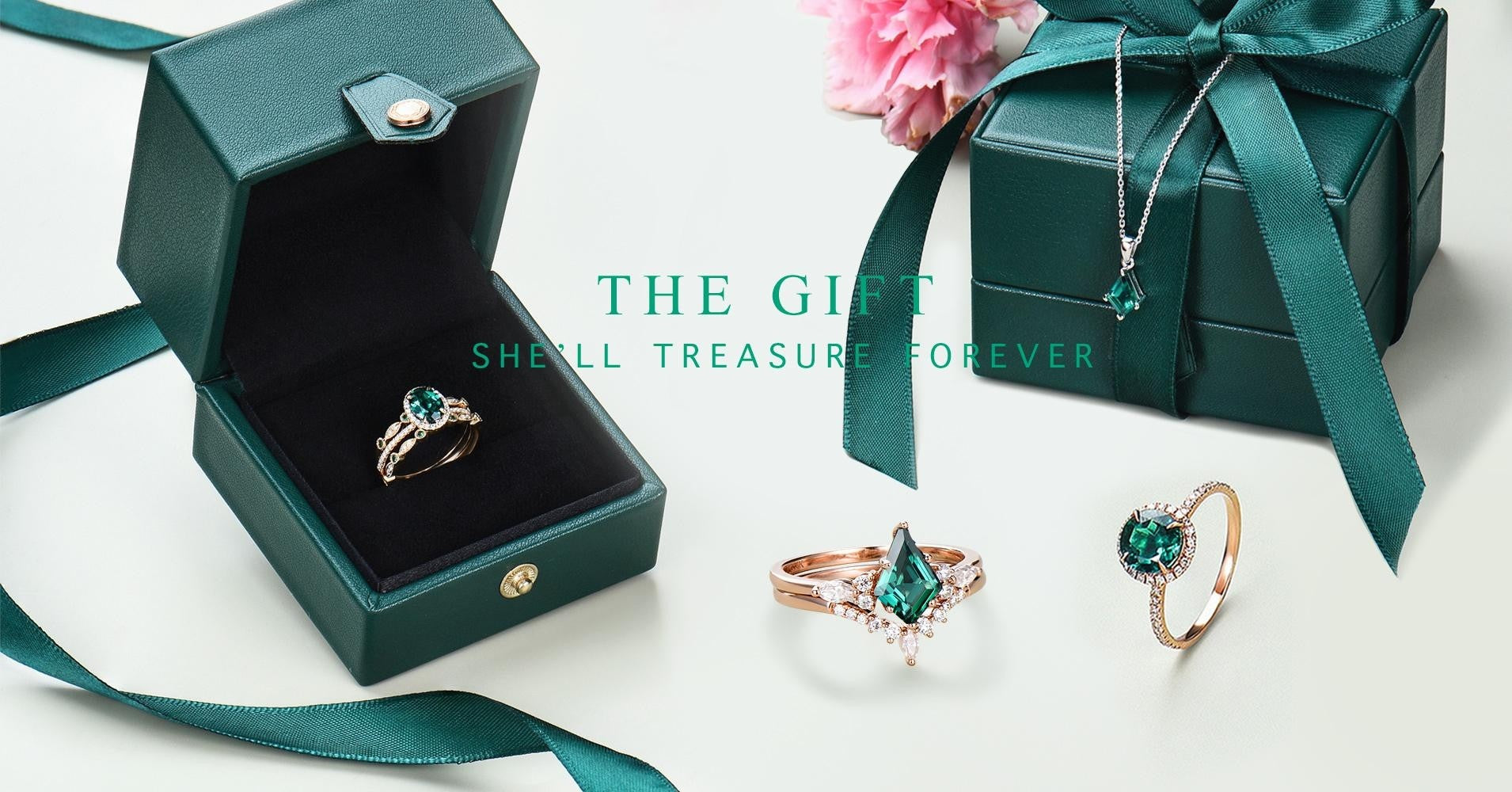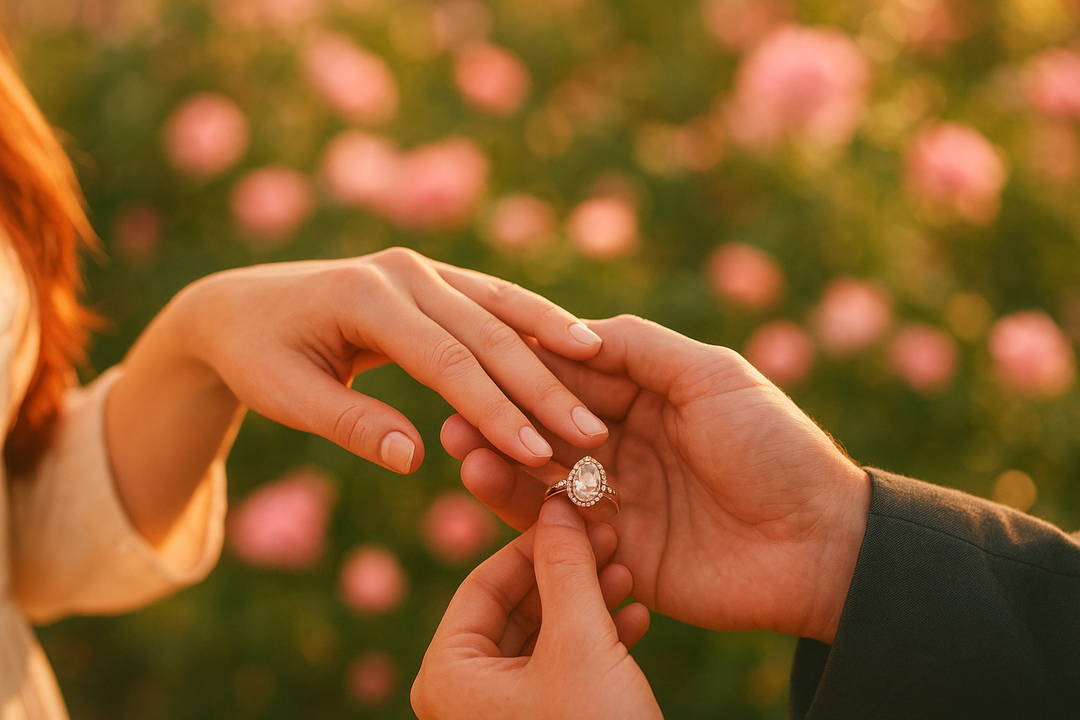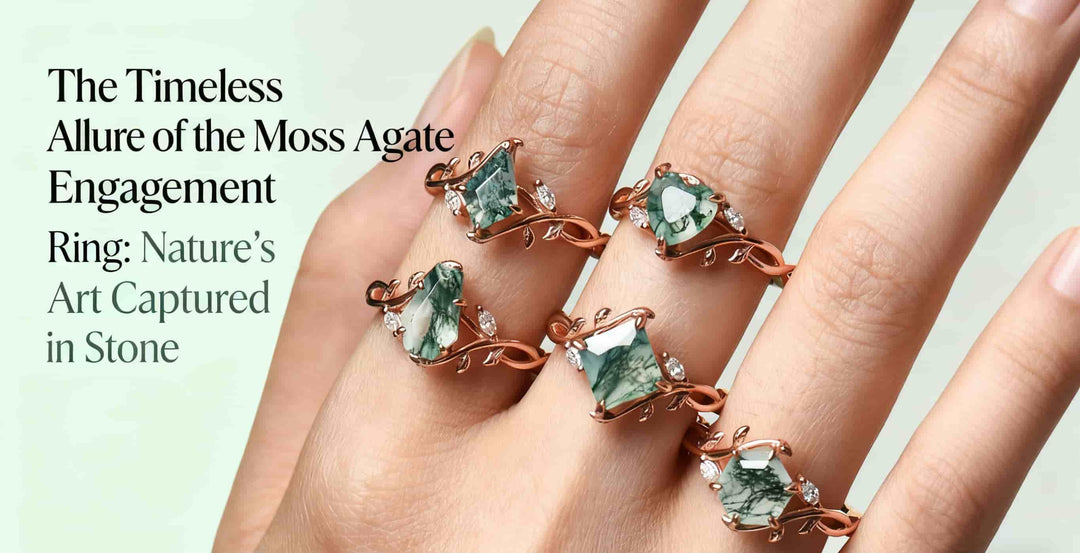Emerald vs. Diamond: Which Should You Go For?
This article will take a quick look at emerald engagement rings and see how they compare to diamonds. If you wondering what emerald is, here’s what to know.
What's Emelald?
Emeralds are a gemstone and a variety of mineral beryl, colored green by traces of chromium or sometimes vanadium. Beryl has a Mohs hardness of 7.5-8. they are classified as generally poor in toughness. Emerald is a cyclic silicate.
Emerald Known as the king of emeralds, it is as rare as the bright red Uranus, one of the four most precious stones recognized by the international jewelry community (red, blue and green stones as well as diamonds). It is highly sought after for its unique green color, its unique charm, and its magical legend.
Emeralds have been one of the most precious stones since ancient times. It is said to have been offered in front of the statue of a goddess in ancient Babylon 6,000 years ago. In the ancient Chaldean countries of the Persian Gulf, women were particularly fond of emerald jewelry. Thousands of years ago, the ancient Egyptians and Greeks also used emeralds in their jewelry.
Trying to compare emeralds and diamonds is like comparing oranges and apples. But if you are curious to know what makes these two stones different and similar, this article will give you a quick overview of their qualities.
Color Difference
Color is the most obvious difference between emerald and diamond. Emeralds are mostly bluish-green or green in color, while diamonds are in yellowish and clear shades. The emerald green color is because of vanadium or chromium chemicals.
You can also find diamonds with a greenish color and even red. The existence of green diamonds is probably the reason why some people confuse them with emeralds.
Since green diamonds are uncommon, many people might find it hard to spot the difference by just looking at the stones. Things get worse if you are dealing with an emerald-cut shape green diamond.
Color is undoubtedly a very crucial aspect when valuing both emeralds and diamonds. For diamonds, a sparkly clear color is preferred, while green is the choice of color for emeralds.
If you are new to buying an emerald, it is recommended to choose those with deeper shades of color. The green must be somewhat shiny and vivid at the same time.
Cut Difference
There are different standards for the cut of diamonds and emeralds. Part of a diamond's sparkle comes from its cut, and emeralds don't get this benefit from their cut. Emeralds (and other colored gemstones) are cut to preserve their weight while maintaining the ideal cut as much as possible. The cut of colored gemstones looks irregular compared to diamonds.
Composition Difference
Emeralds are a type of gemstone that comes from beryl, while diamonds are gemstones made of carbon. In terms of hardness, these two gemstones are not that far off from each other on the Mohs scale. Diamonds rank 10th on the scaale of hardness, while emeralds are at 7.5.
It means that diamonds are much harder compared to emeralds. But it doesn’t mean that emeralds are less hard or are not as fragile. Emeralds are very durable that can last several decades with no fissures at all.
But between these two, diamonds are still harder. Due to the brittle nature of nature, designers try not to make plenty of cuts on this gemstone. This is why emeralds are mostly known because of their emerald shape, or rectangular-like shape.
Inclusion Difference
Inclusions are also important when comparing emeralds and diamonds. In gemstones, inclusions are imperfections and defects. These include chippings, cloudiness, dark shades because of poor cutting methods, and others.
These imperfections are more common in emeralds than in diamonds, many of which can be seen with the naked eye. But when it comes to emeralds, imperfections and inclusions are not really a priority, and these stones can get away even if they are imperfect.
Due to the enhanced clarity and higher value of diamonds, visible inclusions are the last thing you want to see in these stones. This is why diamond designers do their best to ensure that every diamond piece is clean and clear to the naked eye.
Value Difference
If the emerald and the diamond are of the same quality, the emerald will be more expensive. In any case, this is not a standard rule, as in some cases, diamonds may be more expensive than emeralds. It is entirely a matter of quality, as measured by the 4Cs of color, clarity, cut and carat weight.
There are many differences in the way emeralds and diamonds are evaluated.one of the most obvious is color. Emeralds are assessed for how green they are. Diamonds are evaluated based on their clarity and color grade .
There are three types of clarity for colored stones: Type I, Type II and Type III. I specify colored gemstones because diamonds have a completely different clarity grading system.
Conclusion
Emeralds and diamonds are both beautiful gemstones in their own rights, there may be many key differences between emeralds and diamonds, they are quite similar in value. Both types of gemstones are generally expensive, and it is common to find emeralds that cost the same as a diamond. As supply steadily declined, emeralds became more expensive due to their rarity. If your budget is limited, you can consider moissanite rings instead of diamonds, synthetic emeralds rings instead of natural emeralds.We hope this emerald vs diamond comparison guide has made it easier for you to decide which gemstone is perfect for your ring.
Alexandrite is the birthstone for the month of May .Ready to find your own Emerald engagement ring? We've curated a list of our favorite styles below.




